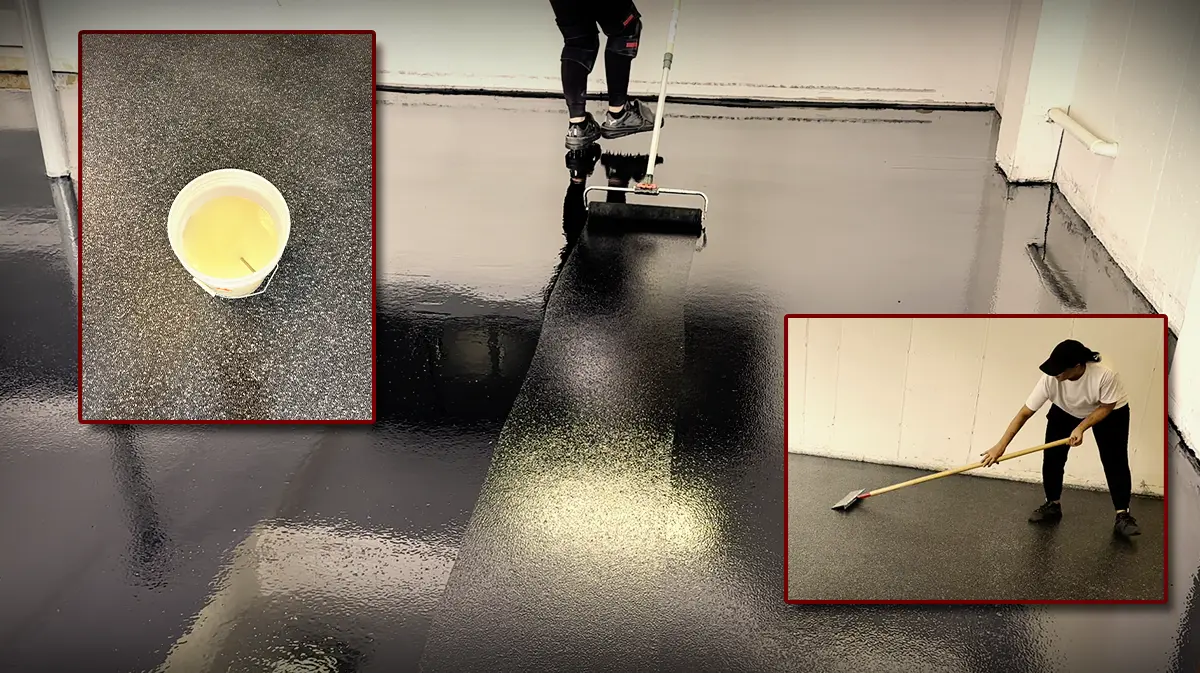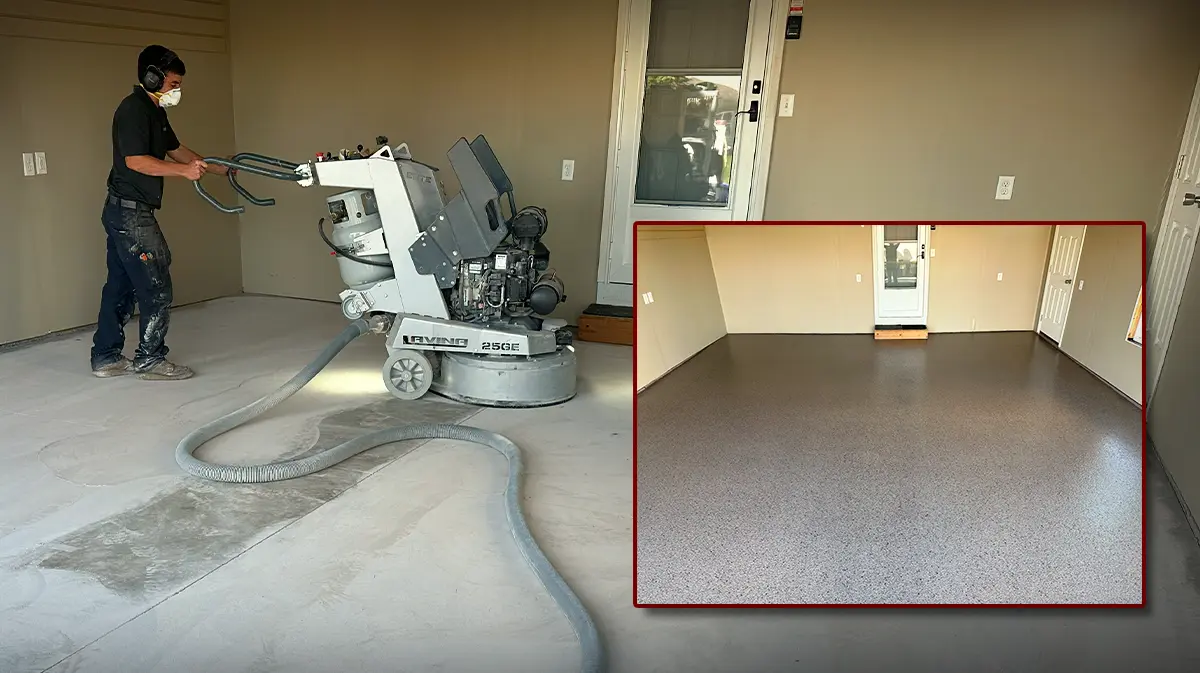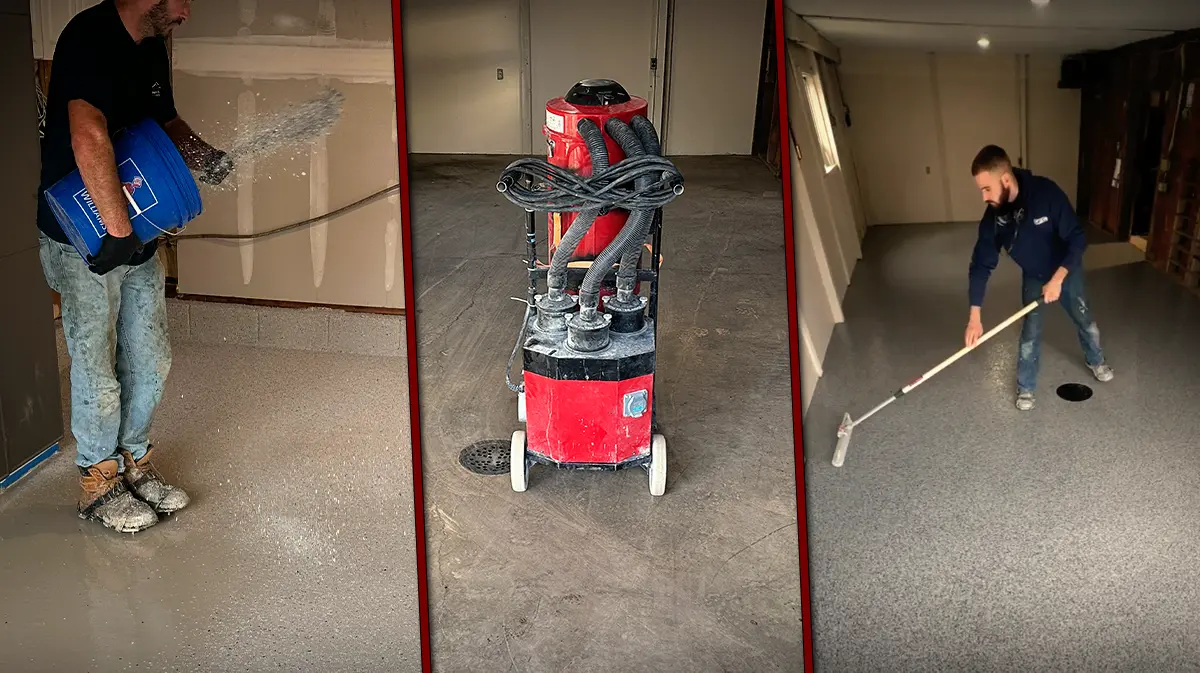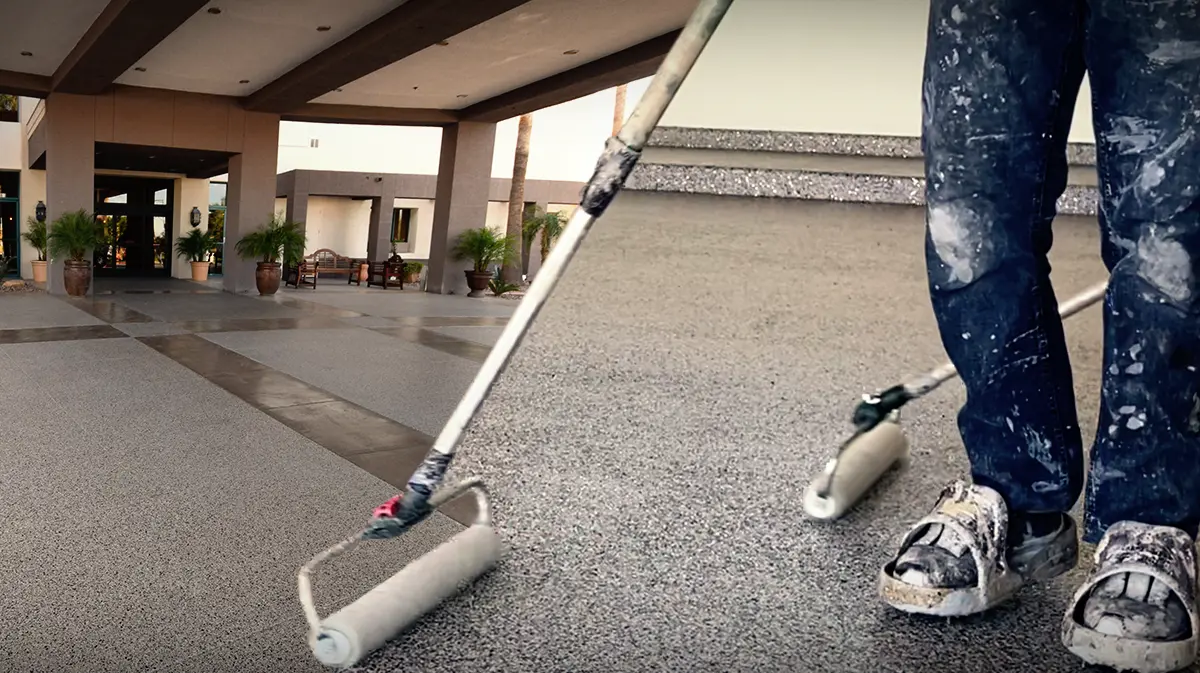Nashville’s unique blend of heat, humidity, and mild winters presents different challenges for floor coatings. Below, we’ll explore essential terms to help you understand the vocabulary of epoxy flooring.

Vocabulary of Epoxy Flooring: Coating Types
Epoxy coatings and their like rely on chemistry to form strong bonds with concrete. Let’s explore the main types of coatings.
- Epoxy Coating: Epoxy coatings cure through a chemical reaction between a resin and hardener, creating a robust bond with concrete. These coatings are high-build (read “thick”) and slow curing. Perfect for use as direct-to-concrete primer coats in garages and basements. They can also be used as color coats and top coats, but are limited to spaces that aren’t exposed to sunlight (as epoxies fade over time in the presence of UV light). However, their ability to resist moisture wicking up through the concrete (and the resulting hydrostatic pressure) is unmatched. It’s a great option for Nashville garages that need to stand up to wet, humid summers and occasional winter cold.
- Polyaspartic Coating: Polyaspartic coatings cure far more quickly than epoxies, often in under an hour. They also provide extreme UV and chemical resistance. making them perfect as clear topcoats. However, the fast-cure property (and faster still in the presence of moisture) makes them a poor choice as moisture-mitigating primers. But when used as a top coat in combination with an epoxy primer, they’re perfect for Nashville homeowners needing a durable UV-resistant floor installation.
- Polyurethane: A flexible color coat or topcoat often applied over an epoxy primer. These coatings provide excellent protection against UV rays, scratches, and chemical spills. However, due to odors and poor resistance to “hot-tire transfer”, these coatings are best kept for exterior installs like patios and walkways. Definitely, not garages.
You might have heard terms like concrete floor paint or garage floor paint, but these are sometimes used casually to refer to epoxy floors. Actual concrete paint is just a type of paint that sticks to the surface; it doesn’t bond with the concrete the way epoxy coatings do. The latter penetrate and chemically bond with the floor, providing much greater durability and protection, making them more than just a simple paint job.
Vocabulary of Epoxy Flooring: Environmental Factors
Nashville’s hot, humid climate, combined with moderate winters, requires coatings that can handle moisture and UV exposure while maintaining durability.
- Moisture Mitigation: Nashville’s high humidity makes moisture mitigation essential. Cue the moisture-mitigating epoxy! This step ensures that the epoxy primer deeply penetrates and bonds to the concrete, preventing bubbling and peeling in damp conditions.
- UV Resistance: While Nashville doesn’t experience extreme sunlight like some other regions, UV resistance is still key for outdoor spaces and garages that get plenty of sun. Cue the UV-resistant polyaspartic!
Aesthetic Options
Beyond protection, epoxy and polyaspartic floors offer visual customization, allowing homeowners to achieve both function and beauty.
- Flake System: This involves adding decorative flakes into the coating, offering both slip resistance and aesthetic customization. In Nashville, flake systems are ideal for garages and basements where both safety and style matter.
- Mica Flakes: Mica flakes add a reflective, shimmering finish to epoxy floors, creating a high-end look. Perfect for commercial spaces or luxury garages in Nashville, mica flakes are both durable and visually striking.


Conclusion
Nashville’s climate presents a mix of heat, humidity, and mild winters, making durable epoxy flooring essential. Whether you’re looking for quick-curing polyaspartic or decorative flake systems, these key terms will help guide your decision for a durable, beautiful floor.

